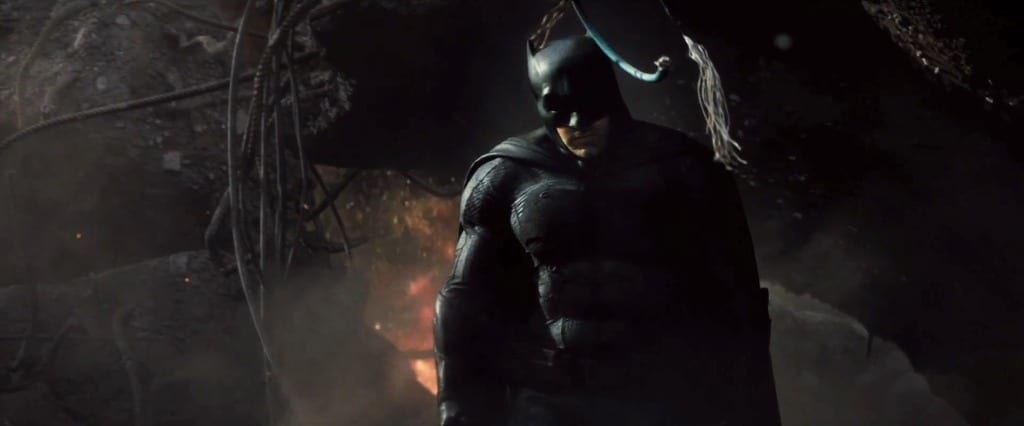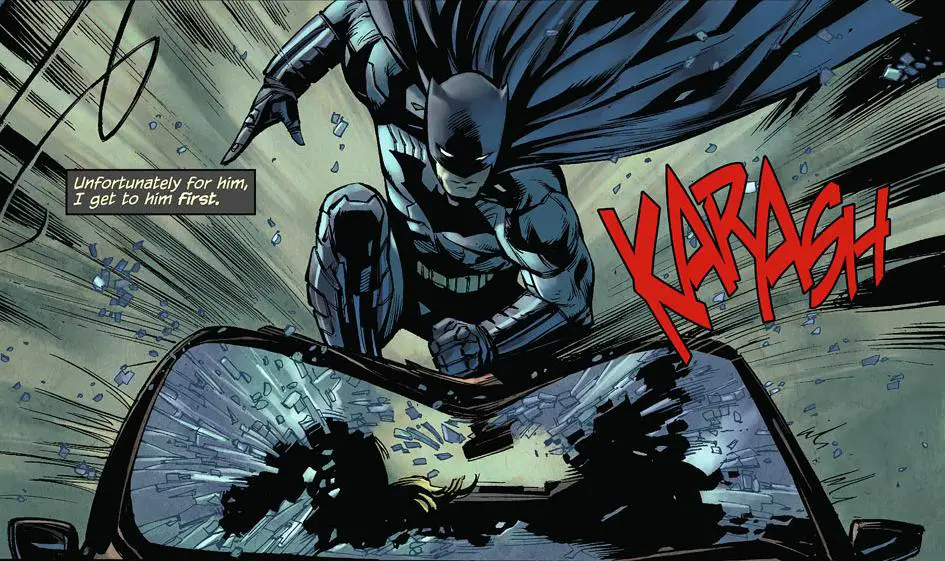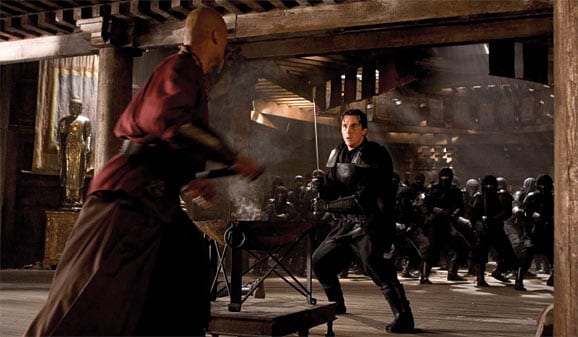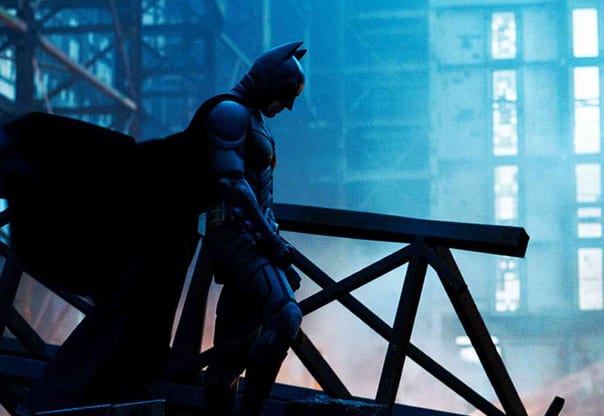In July of 2015, Ian Danskin of Innuendo Studios published set of videos exploring the kind of young men who participated in Gamergate. This series, Why Are You So Angry?, explores the complicated mess of cultural factors that inspire the irrational rage that Gamergate so effectively weaponized against the increasing feminist presence in video game fan culture.
While the entire video series is excellent, and this is definitely a rabbit hole worth falling down on its own, for now we’re just going to focus on the amalgam of white, young, males that Danskin describes in the first 1:20 of the video, Angry Jack.
“Jack was the angriest stranger I had ever seen. Once again, out of his car and at a party he was apparently a pretty nice guy, but at 2:45 in the afternoon, stuck in traffic in what was clearly his mom’s old hippie car, he would look out his window and sneer at us, eyebrows knitted and furiously blasting his Bengal tiger of an engine at anyone who made eye contact. And as he pulled ahead, making his way down the hill toward the stoplight, we would call after him, ‘Why are you so angry?’
When I spend too much time on the internet and see people, mostly young men, spuming and weirdly directing an incomprehensible anger, I remember Angry Jack.” —Ian Danskin, Why Are You So Angry?
For everyone else except Angry Jack (and sometimes even for Angry Jack himself), the question of why he is so angry is indeed a puzzling one. In most cases, Jack will be white, male, cis, heterosexual, and neurotypical (unless we add being an asshole to the Axis II disorders in the DSM-6) with an affluent background and a very passionate, deep-rooted love of pop culture. As John Scalzi put it in his now infamous article on video game difficulty settings as an analogy for privilege, Jack should have started off life on the lowest setting possible. Yet despite this, Jack sure has a lot of anger to spare, and little capacity or motivation to control it, cope with it, or funnel it into something more productive than fandom wars and console debates.
For those of us playing on higher life difficulties (non-white, female, queer, neuroatypical, etc.) Jack’s emotional immaturity and inability to handle change or criticism is, to put it mildly, frustrating. My use of the amalgam Angry Jack, rather than a more general epithet like ‘young men,’ is a creative decision made in an attempt to sidestep the way that Angry Jacks tend to respond to laissez faire generalizations (and I’m sure this was Danskin’s logic as well).
As a straw man, Angry Jack is just enough of an amalgam to have a broad application, but also just human enough and specific enough to keep the conversation grounded in real-life application as opposed to sociological theory. And since this article is about Batman, let’s call this both a creative decision and an informed precaution, for reasons that are fairly obvious. I am not talking about you. I am talking about Angry Jack.
“What does this all have to do with Batman?” You ask, scrolling back up for a second to double check the article title and make sure you clicked on the right one. The answer is: a LOT. But how they relate to each other is complicated to say the least, so it’s going to be a bit of a trek to get there.

As regular readers of our Supergirl article series will know, I have made no effort to conceal my dislike of the direction that Batman has taken as a character in both Nolan’s and Snyder’s cinematic universes. I tend to take pot shots at them whenever I get the chance to do so, but I have yet to go into any real detail about what specifically I don’t like about them.
The reason for this is twofold: 1.) until very recently, this was a reasonably unpopular opinion, and 2.) it had been so long since I had seen a new interpretation of Batman for an adult audience that contrasted this specific characterization in any significant way, it felt much like trying to landscape a golf course with a hand trowel.
Considering my status as a comic book fan should be classified as Filthy Casual at best, and most of my interest in Batman arises from the 90’s tv show or the Arkham video game series, I felt like I was not a big enough Batman fan to climb up on this particular soapbox, especially not when I had so many other things to be angry about this year. However, I’ve now had the treat of being introduced to Tom King’s Batman (2016—) series, so now I’m thinking maybe I have room for one more soapbox in my life after all.
As some other publications have discussed since the release of issue #12 in King’s Batman (2016— ) series, this issue contains the revelation that Batman had, in his youth, engaged in some self harm behavior, specifically cutting. This isn’t exactly what I’d call a shocking reveal (the miniseries is called “I AM SUICIDE” after all) but what really took me by surprise was how the self-harm revelation was such a predominant theme of the issue, rather than just a singular event. I am also now deeply invested in how important this reveal could potentially be for Batman not just as a character, but as a role model and a cultural icon if this interpretation catches on across canons.
I would like to clarify that I don’t think Batman is a good role model. (Revolutionary, I know.) But he is a role model for Angry Jack, who has plenty of reasons to engage in the vigilante power fantasy that Nolan and Snyder’s Batmen have come to embody. In this fantasy, you defeat feelings of helplessness by kicking ass and taking names, rather than engaging in introspection and therapy. Conquering cognitive dissonance is hard and time consuming: punching things is fast and easy. In a utilitarian sense, it’s certainly the more efficient path to resolution.

While there are thousands upon thousands of characters that embody this quick-and-easy approach to resolving emotional turmoil, Batman is by far the most culturally relevant and timeless. So what makes Batman stand out from the crowd? Or, more importantly, why does Batman stand out from the crowd specifically for Angry Jack? The Doylist answer is actually pretty straightforward. Angry Jack very likely grew up during the 90’s, maybe the late 80’s, making him the perfect age to fall in love with Batman: The Animated Series of the 90’s. He is also going to be young enough to remember Tim Burton’s Batman films fondly, rather than with a tidal wave of second hand embarrassment over Schumacher’s batsuits.
This nostalgic fondness as a teenager or young adult is further enforced by Nolan’s Dark Knight trilogy, which is probably one of the only examples in history where that nostalgia bubble wasn’t brutally popped by the franchise reboot. For Angry Jack, Batman as a character had grown up with him, and that is a potent level of influence for a fictional character to have. However, it goes much deeper when you combine who Jack is as a person, why he is like that as a person, and the ways which Jack is influenced and inspired by Batman and Bruce Wayne. To really get to the meat of this, we need to take a brief little detour into formal academia.
For the sake of brevity and with consideration to this topic’s triggering nature, I’m not going to get into the nitty gritty specifics about Non Suicidal Self Harm (NSSH from here on), but I am going to give it a once over. Though the research into NSSH is all very recent, with most of it spanning the past twenty five years, there is a lot of it. This is partly because NSSH rarely occurs in isolation (so it gets looped into research on many other mental health issues in addition to its independent articles), but also because it is shockingly common in the general population. Exactly how common it is varies wildly from study to study, but moderate estimates put the occurrence rate in the ballpark of 50% of the population having at least one episode of it in their life. Like the eating disorder spectrum, NSSH’s public perception has long been that it is a condition of affluent, white, female teenagers, despite this stereotype being proven woefully incorrect multiple times over. The notion that it was done for attention or ‘practice runs’ for suicide attempts was a popular theory as recently as the late 90’s, but the modern view on it is that NSSH, like eating disorders, is about control.
Most human beings would agree that emotional pain can be just as overwhelming and traumatic as physical pain, perhaps moreso because treating emotional pain is much less straightforward than a physical injury. Emotional pain also does not trigger your body’s opiate pain responses, so there is little reprieve from it. The soothing effect of NSSH, therefore, is to ‘override’ emotional pain with physical, which triggers your body’s pain management systems and provides relief from the emotional pain. It provides autonomy in managing something that is otherwise uncontrollable: while you cannot prevent yourself from feeling pain, you are now in control of how you experience it.
The stereotypical method for this is cutting, though hurting oneself in any other method (such as hitting or burning) is also a possibility, and in recent years the diagnostic standards have been expanded to more accurately cover the scope of relevant maladaptive behaviors. Like the learning disability spectrum, the sudden, sharp, increase in diagnosis is a result of the refining and broadening of our understanding of the behavior, not that it is necessarily occurring more frequently in the population.
The main place in which you see a difference between genders in NSSH is method of injury, with females gravitating more towards cutting behavior and males gravitating towards hitting themselves or hitting themselves against things. This follows western culture’s tendency to encourage women to internalize, while men are encouraged to externalize. Because this dichotomy is so deeply pervasive in our culture, plus our tendency to normalize and romanticize men being physically aggressive or outright violent to one another, what we end up with is a culture where a young girl who cuts herself is perceived to have a mental disorder, while a young man who starts a fight club is just working through his aggression. When it comes to maladaptive coping mechanisms in young males, depiction is almost exclusively framed as endorsement. And Angry Jack has been marinating in that endorsement his entire life.
To someone like me, who has a great deal of both personal and academic knowledge on this subject, all of this is quite obvious. It is also obvious to anyone with a functional understanding of feminist theory, even if only limited to the concept of toxic masculinity. But the problem is that until you hit your humanities GE requirements in college, these are not required learning concepts for teens and young adults: you have to actively seek out this information to learn it.
Angry Jack, by definition, already has the deck stacked against him for that because by the time this information might be relevant to him, he’s probably already seen Fight Club. He might have played a contact sport in high school. He very likely was never encouraged to express vulnerability in any way that might be construed as feminine. By the time Angry Jack encountered anything that challenged that, in a context where he could not simply choose to ignore it, he was several Batman films deep in the Violent Batman canon. And as we all know, nothing makes you want to dig your heels in hard like being told your favorite thing is Problematic.

This is where we get to the core of what specifically I don’t like about the Nolan and Snyder cinematic universes. I am not, as a rule, opposed to graphic violence. In fact I often enjoy it with a sort of juvenile glee, but only when it is contextually and tonally appropriate for the story, the characters, and the intended audience. It must have purpose, especially if you are going to introduce it into the canon of a story or a character who has previously not been the type to kill. Tom King’s Batman draws into sharp focus just precisely what the problem is with Snyder’s Batman in particular, though Nolan’s Batman certainly does his fair share of killing in a more indirect way. It isn’t that he kills people, it’s that there isn’t a compelling reason or justification for why he kills people. And I am not nearly the first or the last person to pick up on this problem with Snyder’s ‘interpretation’ of what makes a good Batman. GeekyGlassesTV hits the nail right on the head:
“When [Snyder’s] Batman kills, it’s cuz it’s ‘badass.’ I hate that word. ‘Badass.’ Can we repossess it? Because you know who was legitimately badass? Rambo. Know why? Because he fucking cries. He shows emotion. And vulnerability. That’s hard. That’s a challenge. That’s badass. It doesn’t take effort to scowl and punch.” —Geeky Glasses TV, Batman V Superman: Dawn of Justice Review
The young man who did that video is actually Angry Jack’s peer; he’s in his mid twenties, he grew up on pop culture, etc. etc. But where he differs from Angry Jack is in his awareness, even if it’s from an oblique angle that’s still peppered with problematic elements, that turning Batman into an unhinged authoritarian prone to excessive violence is a problem. For all intents and purposes, what Nolan and Snyder did to Batman is an excellent modern example of the kind of internalized messages that turn Angry Jack into, well, Angry Jack. Nolan and Snyder are not exclusively responsible for the creation of Angry Jack; if that were the case then this would be a very simple problem to solve and prevent in the future.
So how much influence does the media have on our actions, really? The answer lies somewhere between ‘less than alarmists would have you believe,’ but most definitely ‘more than dismissers would like to admit.’ Because of this, there is a certain amount of cultural responsibility a writer has when working with such an iconic and influential character like Batman, because perpetuating problematic portrayals can and does have real world consequences. To dismiss the influence that a character like Batman has on Angry Jack is not only a disservice to the character, it’s downright dangerous.
When we talk about media being a bad influence on young people, the issue is not so much that Batman literally tells Angry Jack to go and take justice into his own hands. That’s really an incomplete view of the problem, and an obnoxious oversimplification. The issue is that the constant barrage of media enforcing the idea that men can only process strong emotions externally works in tandem with cultural toxic masculinity. This then creates an environment where Angry Jack absorbs and adopts these problematic ideals and coping mechanisms, and is not given a compelling reason to question them until he’s old enough to be really resistant to changing them.
Societal norms are reinforced through both depiction and endorsement, and no matter how much the current crop of Hollywood writers want to believe it, media does not exist in a vacuum. So while Angry Jack has a responsibility to alter his perception of the world he lives in and the media he consumes once he is made aware that there is a problem, we can’t expect him to do that until he is consciously aware of the problem. If Angry Jack’s favorite media consists exclusively of problematic content, and his social bubble doesn’t include anyone with the necessary perception to question that content, then these concepts have a great deal of time to become entrenched and reinforced against introspection. Angry Jack is part of the problem, but it is the content creators that give life to Angry Jack.
It’s an ouroboros circle jerk of toxic masculinity, and the cycle will begin anew each time a new crop of Angry Jacks breaks into the media production market. It’s not enough to just break the circle; you have to target the source.
Batman’s introverted, lonesome persona, and his portrayal as a lone warrior against the world who externalizes his emotional pain, is always going to resonate with Angry Jack. That alone is not necessarily a problem. The problem is that many of the popular Batman canons perpetuate a maladaptive coping mechanism without paying any lipservice to that it is maladaptive or why it is maladaptive.
 It’s not like there haven’t been writers for Batman who understood why the nuance is important, but as of late the pop culture perception of Batman is a really potent example of what happens when you write fiction without cultural awareness. No matter how far you rise, no matter how much creative freedom you earn or you are given, no one is above the cultural context in which their work must be consumed. You are responsible for both what you say and what you imply, and unfortunately, writing responsibly is a lot of work. And that’s why so many writers don’t want to do it. It is much easier to say “well, that’s like. Your opinion, man,” and stick your fingers in your ears than it is to take a script into rewrites because your consultants told you that maybe, possibly, it might be a bad idea to turn Batman into an authoritarian monster “because it’s badass.”
It’s not like there haven’t been writers for Batman who understood why the nuance is important, but as of late the pop culture perception of Batman is a really potent example of what happens when you write fiction without cultural awareness. No matter how far you rise, no matter how much creative freedom you earn or you are given, no one is above the cultural context in which their work must be consumed. You are responsible for both what you say and what you imply, and unfortunately, writing responsibly is a lot of work. And that’s why so many writers don’t want to do it. It is much easier to say “well, that’s like. Your opinion, man,” and stick your fingers in your ears than it is to take a script into rewrites because your consultants told you that maybe, possibly, it might be a bad idea to turn Batman into an authoritarian monster “because it’s badass.”
So how do we fix this? Or more importantly, where do we start fixing this? Well, it starts by hyping the crap out of writers who do understand the nuances of Batman’s cultural significance, and who make a point of staying aware of both what they are depicting and endorsing. The most effective way to change a problematic cultural perception, especially one that is deeply ingrained, is slowly and deliberately, so it avoids triggering the knee-jerk instinct we human beings have against changing our point of view. Our brains are literally wired to resist change. So we need to take it one step at a time.
So what, precisely, is so remarkable about Tom King’s Batman? On the surface, it seems right in step with the rest of the grimdark batcanons. But it’s not, and in a very specific way. By depicting Batman’s vigilantism as a form of NSSH, deliberately emphasizing the raw and unrestrained agony Bruce Wayne experienced as a direct result of his helplessness, and by explicitly connecting it to suicide idealation and traditional NSSH behavior, we end up with a violent Batman who is a depiction of violence without being an endorsement of it.
By directly acknowledging that Batman’s hero complex and vigilantism is a maladaptive coping mechanism, we can write a Batman who is violent and unhinged without being a glorification of his coping mechanisms. “Batman” is a personification of Bruce Wayne’s attempt to control his emotional pain by making it physical, and that is a significantly more nuanced and unique approach to a grimdark adaptation than what we typically see in media, especially because it is so explicitly laid out. Juxtaposing Batman’s raw and visceral confession against two-page spreads of him tearing his way through literal armies of faceless goons is the first time in a while that I felt like a descent into violence had genuine artistic and narrative purpose. And the direct focus on Bruce Wayne’s emotions, especially how deeply and dramatically he feels them, is a humongous step in the right direction when it comes to normalizing moments of emotional vulnerability in an aggressively masculine character.
The point I am laboriously trying to get to is this: if we are going to deal with Angry Jack, we are going to have to deal with the things that create Angry Jack’s problematic behavior and worldview, not just Angry Jack himself. There is a need to do both, of course, but there is a greater importance to trying to stop the next round of Angry Jacks from developing in the first place. A stitch in time saves nine. And since media plays a role in shaping our worldview more than ever before, it is a good place to start fixing the problem, especially when we use iconic, influential avatars as our vehicle for social change.
As counterintuitive as this might seem at first glance, it is actually much easier and much more productive to change Batman than it is to change Angry Jack. Because fictional characters are completely at our mercy; we craft them into reflections of ourselves and our worldviews, and they in turn influence those who relate to them. A little mindfulness like Tom King’s will go a very long way in shaping just how angry the next generation of Angry Jacks turn out to be.


